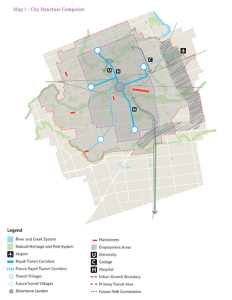Steven Strogatz theory of synchronization, or spontaneous order, has made the rounds across the Internet. You may have come across examples of Strogatz theory on your Facebook wall if you remember the videos of synchronizing metronomes.
There are, of course, many other examples of sync theory in our world. Everything from fireflies that synchronize to Anglicans that all respond in unison after someone calls out, “The Lord be with you”.
But what does sync theory have to do with the church? The theory posits that all things come into alignment and synchronization. Through this synchronization, male fireflies are better able to attract more females when they band together. Anglicans in a crowded room hush and are ready to listen or pray. And for the church at large it hears and responds to the world around it, coming into synchronization and thereby growing and thriving.
This doesn’t mean we bend or change ourselves to fit society, nor throw out our traditions. As much as we listen to the community around us, the community around us also will listen to us and adapts to us as we come into relationship. The changes that we make to our spaces, our services, or where our services are even held also requires society to change from the strictly profane to quasi-sacred, even if the sacred looks very different then what we are used to today. It is about coming into sync and relationship with one and another; church and neighbourhoods.
If you are wondering what happened in the video above, it is simple, physics happened. Strogatz, an expert in applied mathematics, uses this experiment to illustrate his theory of spontaneous order.
In spontaneous order, Strogatz explains that living organism and even inanimate objects fall into sync with one another in ways that seem unnatural and inexplicable. As we just saw in the video, metronomes are placed on a small board and each ticking with the same speed but at different intervals; so they each move at the same X number of beats per minute. The board with the ticking metronomes is then placed on two bottles of water.
For a few moments nothing seems to happen, but you slowly notice and hear the metronomes slowly coming into sync with each other. The metronomes, Strogatz explains, are “speaking” to each other. Each metronome was in fact reacting to the motion the others generated across the surface of the board as it rested on the water bottles. They were each communicating their individual timing to each other, allowing them to line up rhythmically, even though scientifically speaking they should never break their individual timing.
But what does this have to do with the church?
In London we have an upcoming municipal election. This new council will be task with implementing The London Plan, which was developed through the ReThink process, the largest citizen engagement process in history of city planning with over 10 000 individual Londoners helping to shape their collective future. This long-range 25-year plan will be for everything from housing and retail development to transit for the city of London. It is imperative that the Diocese of Huron and the Deanery of London listen closely to the decisions that are being made and adjust accordingly. We must come into sync with the world developing around us.
One of the important ways we will come into sync is being very conscious of future transit developments and infill housing developments. Below is the proposed BRT (Bus Rapid Transit Routes). As is common along rapid transit routes in every other Canadian city, infill and densification occur. This makes these routes and the development that will occur around them, the new mission field in London and parishes that are along these routes are poised to make significant gains if the Diocese and the Deanery are willing to invest in them and help them come into sync with their neighbourhoods and transit villages.
The parishes North to South that look to benefit from The London Plan most are:
The parishes East to West that look to benefit from The London Plan are:
* It should be noted that both St Aidan’s and Church of the Ascension would reap secondary benefits since both mission points are quite physically far from the proposed transit villages. Both congregations will have much work to do if they are able to reap the benefits from infill, densification and rapid transits routes in the coming 25 years, but it is still possible.
** It should also be noted that St John the Evangelist and All Saints Hamilton Road are close to the BRT route but will have the same problems of being just enough off the beaten path, so to speak, as does St Aidan’s and Church of the Ascension.
The growing mission field will encircle the Transit Villages and the BRT routes. The parishes listed above will directly benefit in an increased mission field with new evangelistic opportunities to grow their respected churches and have new ministry opportunities. The time is now to begin investing in these parishes for the future, especially for the next 25 years. As we listen and come into sync with the changing world and prepare ourselves to serve the neighbourhoods we find ourselves located in, it is imperative that we synchronize with the developments of the city of London if we are to have the biggest impact for Christ.


